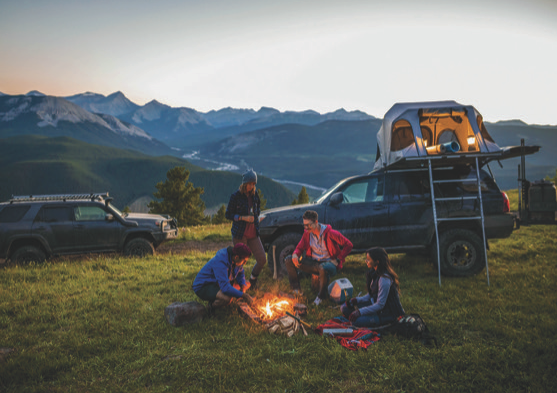The appeal of camping is undeniable. According to The Business Research Company, a market research and intelligence company, the global camping and caravanning market is expected to grow from just under $40 billion in 2020 to more than $45 billion in 2021. Estimates suggest the market will grow even more in the coming years, reaching $56.6 billion by 2025.
Camping has long been a popular pastime for outdoor enthusiasts, but it may have developed an entirely new group of devotees in 2020. Traditional vacations may not have been possible in 2020, when governments across the globe urged citizens to avoid conventional travel as the world found itself in the throes of a global pandemic. In an effort to overcome cabin fever, many people viewed camping as a safe way to get out of the house while still limiting contact with people from other households. That no doubt inspired new generations of camping fans, many of whom will continue to pitch their tents and sit around campfires long after the pandemic has ended.
The National Park Service recognizes the popularity of camping and urges people to stay safe. Veteran campers and novices alike can benefit from reviewing these safety tips, courtesy of the NPS.
• Plan ahead. Camping trips may not require hours of scouring travel websites in an effort to find the best deals on flights and hotels. But camping trips still require ample planning. When planning a trip, take into account who’s coming along. Assess their camping skills and physical fitness to determine the most appropriate place to camp. Campers with limited mobility may be best suited for accessible campsites. The NPS urges campers to consider if everyone in the group will be able to make a long hike from the parking lot to the campsite. If not, choose a site that you can pull right up to or is just a short, easy walk from the parking lot.
• Research the campsite and surrounding area. Know as much as possible about the campsite prior to embarking on your trip. Learn about everything from the local wildlife you may encounter while camping to the condition of surrounding areas, including the altitude, the difficulty of nearby hiking trails and where to go in case of emergency.
• Develop an emergency plan. The NPS urges campers to develop an emergency plan, noting that it’s always wise to expect the unexpected when camping. Bring a first aid kid along when leaving the campsite to engage in activities like hiking or fishing. Go over safety protocols before going on a hike, including the need to stay together and remain on the trail at all times. More information about what to do should anyone be injured during your trip is available at www.nps.gov.
• Bring the right gear. The NPS notes that each camping trip will have its own equipment needs, which will be dictated by the setting, the time of year of the trip, the difficulty of the terrain, and the duration of the trip. Navigational supplies, sun and insect protection, insulation (i.e., extra clothing and blankets), shelter, flashlights and headlamps, first aid kits, extra food and water, firestarters, repair kits and tools, and a communication device like a smartphone or satellite phone are the essential necessities that should be brought along on all camping trips.
Camping is a great way to get away. Campers of all skill and experience levels can make the most of their trips by emphasizing safety at all times.








Recent Comments